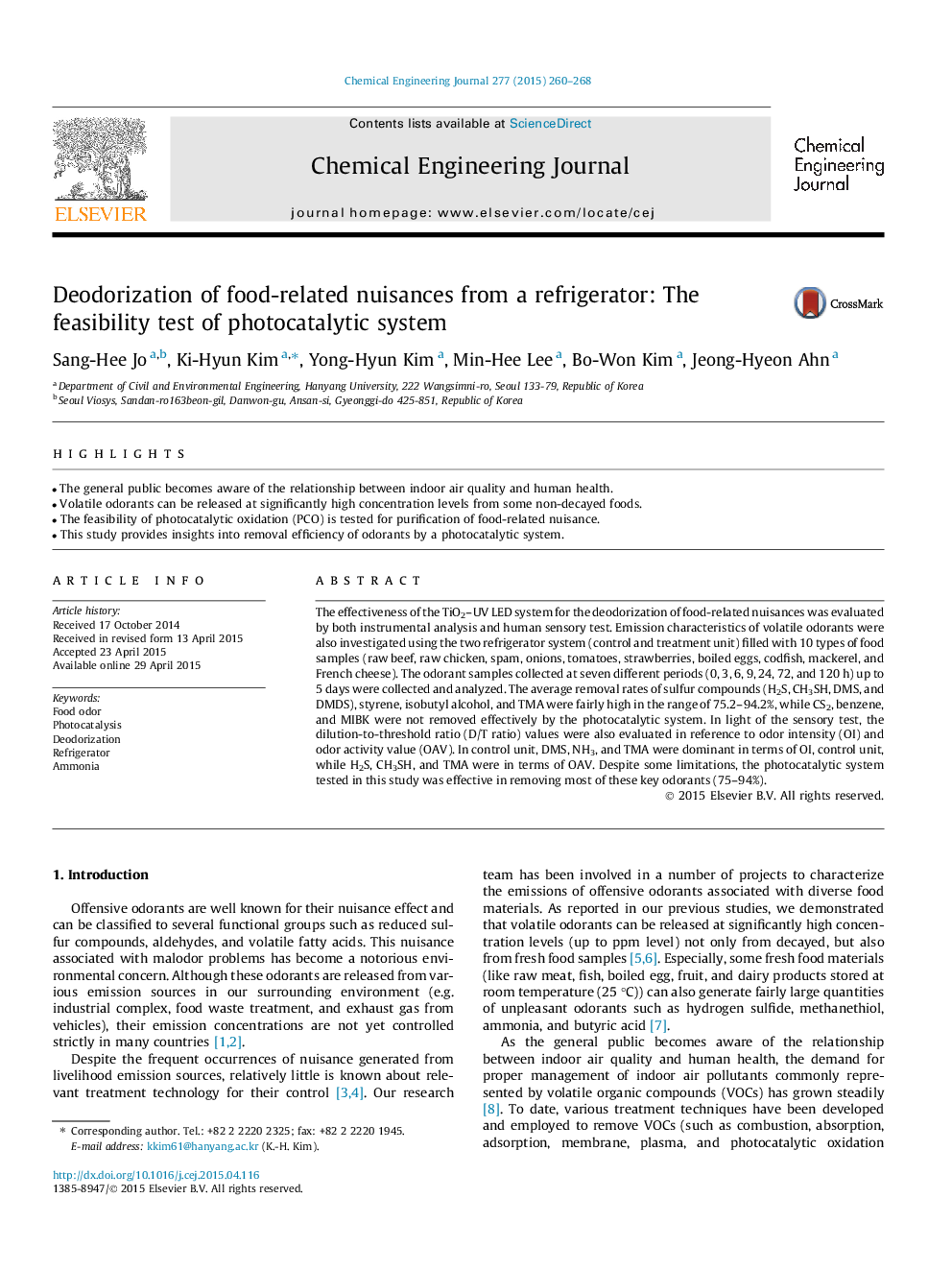| کد مقاله | کد نشریه | سال انتشار | مقاله انگلیسی | نسخه تمام متن |
|---|---|---|---|---|
| 146318 | 456367 | 2015 | 9 صفحه PDF | دانلود رایگان |

• The general public becomes aware of the relationship between indoor air quality and human health.
• Volatile odorants can be released at significantly high concentration levels from some non-decayed foods.
• The feasibility of photocatalytic oxidation (PCO) is tested for purification of food-related nuisance.
• This study provides insights into removal efficiency of odorants by a photocatalytic system.
The effectiveness of the TiO2–UV LED system for the deodorization of food-related nuisances was evaluated by both instrumental analysis and human sensory test. Emission characteristics of volatile odorants were also investigated using the two refrigerator system (control and treatment unit) filled with 10 types of food samples (raw beef, raw chicken, spam, onions, tomatoes, strawberries, boiled eggs, codfish, mackerel, and French cheese). The odorant samples collected at seven different periods (0, 3, 6, 9, 24, 72, and 120 h) up to 5 days were collected and analyzed. The average removal rates of sulfur compounds (H2S, CH3SH, DMS, and DMDS), styrene, isobutyl alcohol, and TMA were fairly high in the range of 75.2–94.2%, while CS2, benzene, and MIBK were not removed effectively by the photocatalytic system. In light of the sensory test, the dilution-to-threshold ratio (D/T ratio) values were also evaluated in reference to odor intensity (OI) and odor activity value (OAV). In control unit, DMS, NH3, and TMA were dominant in terms of OI, control unit, while H2S, CH3SH, and TMA were in terms of OAV. Despite some limitations, the photocatalytic system tested in this study was effective in removing most of these key odorants (75–94%).
Journal: Chemical Engineering Journal - Volume 277, 1 October 2015, Pages 260–268